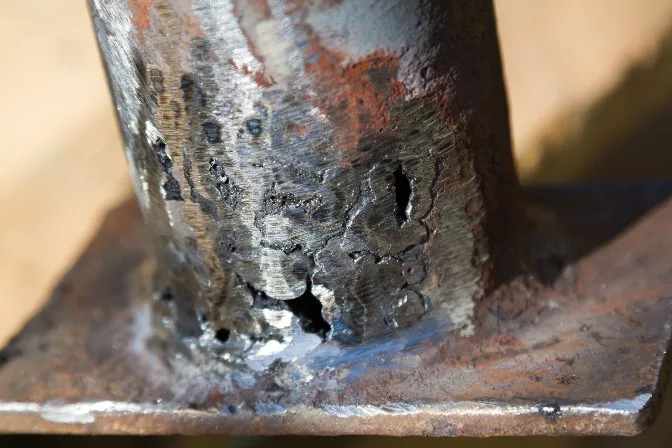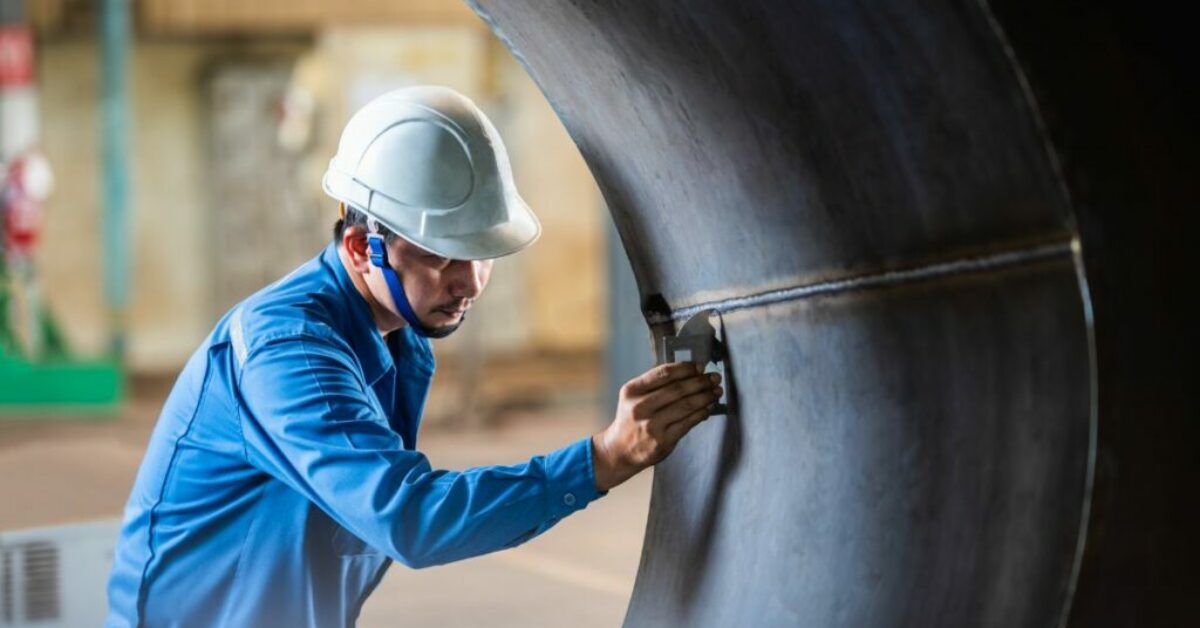Finding the Right Provider for Welding Inspection Madison: Secret Considerations
Finding the Right Provider for Welding Inspection Madison: Secret Considerations
Blog Article
Exploring Advanced Equipment and Approaches for Accurate Welding Examination
In the realm of welding evaluation, the search of precision and reliability is critical, spurring the development of innovative devices and methods. Technologies such as phased range ultrasonic testing and digital radiography are transforming flaw discovery, using unrivaled accuracy in characterizing welding problems. Laser scanning technologies and automatic assessment systems, geared up with man-made knowledge, are redefining the landscape by lowering human error and improving safety measures. As these sophisticated methods continue to advance, they guarantee not only to transform examination methods yet also to elevate appealing questions about the future of quality guarantee in industrial applications.
Ultrasonic Evaluating Technologies
Ultrasonic testing developments regularly stand for the leading edge of advancements in welding evaluation innovations. These advancements have substantially boosted the capacity to identify and evaluate gaps within welded structures, guaranteeing enhanced stability and security.

Furthermore, advancements in software program algorithms for information analysis have boosted the accuracy of issue detection and sizing. Automated ultrasonic screening systems now supply high-resolution imaging, allowing thorough evaluations of weld high quality. These systems are frequently incorporated with advanced visualization tools, which facilitate the interpretation of outcomes.
Radiographic Examination Methods
While ultrasonic screening innovations have established a high requirement in non-destructive examination, radiographic assessment strategies remain to play an important role in welding evaluation by supplying special understandings right into product honesty. Radiographic screening (RT) employs making use of X-rays or gamma rays to permeate materials, producing a radiograph that visually represents the interior framework of a weld. This imaging capacity is indispensable for finding subsurface problems such as porosity, incorporations, and cracks that may not show up through surface evaluations.
The process includes putting a radiation source on one side of the weld and a detector on the opposite side. Variants in product density and thickness influence the attenuation of the rays, producing a contrasting photo that specifically marks imperfections. RT is specifically useful for evaluating thick sections and intricate geometries where various other techniques may fall short.
Regardless of its performance, radiographic assessment has to be performed with rigorous adherence to safety and security protocols due to the hazardous nature of ionizing radiation. Moreover, the analysis of radiographs calls for experienced employees, as the top quality of the evaluation directly impacts the integrity of the assessment. As a result, ongoing improvements in digital radiography are enhancing photo clarity and interpretation performance, strengthening RT's crucial role in ensuring weld top quality.
Laser Scanning Developments
Embracing laser scanning innovation in welding examination has changed the evaluation of weld high quality and honesty. This innovative method supplies a non-contact, high-resolution means of catching detailed 3D data of weld surface areas. Unlike traditional assessment methods, laser scanning provides rapid data acquisition, considerably boosting the performance and accuracy of weld evaluations. The modern technology utilizes laser beam of lights to develop specific 3D versions, which are important for extensive analysis of weld measurements, surface abnormalities, and potential problems.
Laser scanning developments have actually led to considerable renovations in finding and characterizing surface area problems such as porosity, lack of blend, and undercuts. The high-resolution information enables examiners to perform extensive analyses, ensuring that welds meet stringent sector standards. Moreover, this technique sustains the advancement of digital records, promoting long-term quality assurance and traceability.
Furthermore, laser scanning modern technology integrates effortlessly with software options designed for automated problem discovery and assessment. The resultant data can be quickly shared and examined, promoting joint decision-making procedures. As industries proceed to require higher standards for weld top quality, laser scanning remains at the center, using exceptional accuracy and effectiveness in welding assessment.
Automated Examination Systems

Automated assessment systems use the benefit of uniformity, getting rid of human error and subjectivity from the assessment procedure. They are see this created to run in numerous settings, from manufacturing floors to remote field sites, making sure detailed insurance coverage. Welding Inspection Madison. These systems can be set to follow particular welding standards and requirements, offering detailed records and documentation for top quality control purposes
Furthermore, the combination of cloud-based platforms promotes the storage space and analysis of vast quantities of examination information. This enables pattern analysis and anticipating upkeep, enabling manufacturers to resolve prospective issues prior to they rise. The adoption of computerized evaluation systems is a crucial step in the direction of improving the integrity and effectiveness of welding procedures in commercial applications.

Enhancing Security and Performance
A significant facet of enhancing security and effectiveness in welding examination hinges on the integration of ingenious modern technologies that streamline his explanation operations and alleviate threats. The adoption of sophisticated non-destructive testing (NDT) approaches, such as ultrasonic testing, phased selection ultrasonic screening (PAUT), and radiographic screening, plays a pivotal duty in making sure architectural honesty without compromising the security of the personnel included. These techniques permit for thorough examinations with very little downtime, lowering potential dangers connected with traditional methods.
In addition, the execution of real-time data analytics and equipment understanding formulas has changed the means assessment information is translated. By using predictive analytics, potential problems can be determined prior to they manifest right into important failures, making sure prompt interventions and maintenance. This positive strategy dramatically boosts functional efficiency and safety in welding processes.
Moreover, remote evaluation innovations, consisting of drones and robotic crawlers furnished with high-resolution electronic cameras, allow assessors to analyze hard-to-reach locations without exposing them to harmful problems. This not just improves assessment accuracy however additionally minimizes human danger. By leveraging these innovative devices and approaches, industries can accomplish higher safety criteria and operational effectiveness, ultimately leading to more trusted and sustainable welding evaluation methods.
Final Thought
The assimilation of innovative devices and approaches in welding examination significantly boosts flaw discovery and ensures structural honesty. These developments not only boost assessment effectiveness yet also contribute to improved safety and top quality assurance in commercial welding applications.

Ultrasonic screening advancements regularly represent the forefront of innovations in welding examination modern technologies.While ultrasonic testing technologies have actually set a high standard in great post to read non-destructive exam, radiographic evaluation methods continue to play an indispensable role in welding examination by supplying special insights right into product integrity.Accepting laser scanning technology in welding assessment has actually reinvented the evaluation of weld high quality and stability. As sectors proceed to demand higher requirements for weld quality, laser scanning continues to be at the center, providing unequaled precision and effectiveness in welding inspection.
Automated examination systems use the advantage of consistency, removing human mistake and subjectivity from the evaluation process.
Report this page